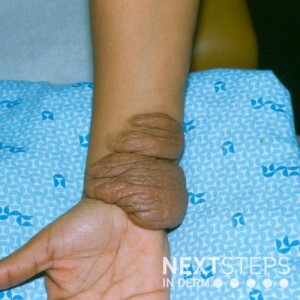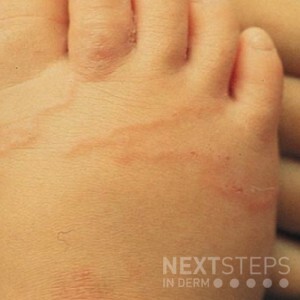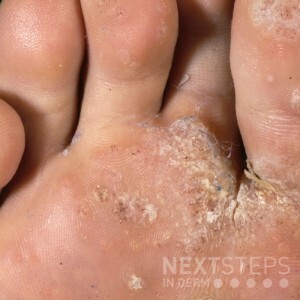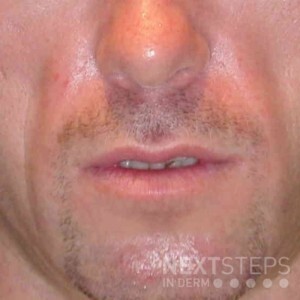Friday Pop Quiz 6/17/2022
 Which of the following medications would be used to treat the following condition?
A. MEK inhibitor
B. mTOR inhibitor
C. BRAF inhibitor
D. VEGF inhibitor
E. PD-1 inhibitor
To find out the correct answer and read the explanation, click here.
Brought to you by our brand partner Derm In-Review. A product of SanovaWorks.
…
Which of the following medications would be used to treat the following condition?
A. MEK inhibitor
B. mTOR inhibitor
C. BRAF inhibitor
D. VEGF inhibitor
E. PD-1 inhibitor
To find out the correct answer and read the explanation, click here.
Brought to you by our brand partner Derm In-Review. A product of SanovaWorks.
…
 Which of the following medications would be used to treat the following condition?
A. MEK inhibitor
B. mTOR inhibitor
C. BRAF inhibitor
D. VEGF inhibitor
E. PD-1 inhibitor
To find out the correct answer and read the explanation, click here.
Brought to you by our brand partner Derm In-Review. A product of SanovaWorks.
…
Which of the following medications would be used to treat the following condition?
A. MEK inhibitor
B. mTOR inhibitor
C. BRAF inhibitor
D. VEGF inhibitor
E. PD-1 inhibitor
To find out the correct answer and read the explanation, click here.
Brought to you by our brand partner Derm In-Review. A product of SanovaWorks.
… 

 What was this patient most likely doing that caused this condition?
A. Walking on the sand
B. Sitting in a hot tub
C. Making margaritas
D. Wading in freshwater
E. Playing with caterpillars
To find out the correct answer and read the explanation, click here.
Brought to you by our brand partner Derm In-Review. A product of SanovaWorks.
…
What was this patient most likely doing that caused this condition?
A. Walking on the sand
B. Sitting in a hot tub
C. Making margaritas
D. Wading in freshwater
E. Playing with caterpillars
To find out the correct answer and read the explanation, click here.
Brought to you by our brand partner Derm In-Review. A product of SanovaWorks.
…  What virus is associated with the image provided?
A. Herpes simplex virus
B. Human immunodeficiency virus
C. Epstein-Barr virus
D. Cytomegalovirus
E. Human papillomavirus
To find out the correct answer and read the explanation, click here.
Brought to you by our brand partner Derm In-Review. A product of SanovaWorks.
…
What virus is associated with the image provided?
A. Herpes simplex virus
B. Human immunodeficiency virus
C. Epstein-Barr virus
D. Cytomegalovirus
E. Human papillomavirus
To find out the correct answer and read the explanation, click here.
Brought to you by our brand partner Derm In-Review. A product of SanovaWorks.
…  What percentage of infants born with this condition present with cutaneous findings?
A. 5-10%
B. 10-20%
C. 25-40%
D. 50-75%
E. >90%
To find out the correct answer and read the explanation, click here.
Brought to you by our brand partner Derm In-Review. A product of SanovaWorks.
…
What percentage of infants born with this condition present with cutaneous findings?
A. 5-10%
B. 10-20%
C. 25-40%
D. 50-75%
E. >90%
To find out the correct answer and read the explanation, click here.
Brought to you by our brand partner Derm In-Review. A product of SanovaWorks.
…  Which of the following cosmetic injectables is FDA-approved for the treatment of lipoatrophy?
A. Calcium Hydroxyapatite (Radiesse)
B. Silicone
C. Botulinum toxin
D. Poly-L-lactic acid (Sculptra)
E. Deoxycholic acid
To find out the correct answer and read the explanation, click here.
Brought to you by our brand partner Derm In-Review. A product of SanovaWorks.
…
Which of the following cosmetic injectables is FDA-approved for the treatment of lipoatrophy?
A. Calcium Hydroxyapatite (Radiesse)
B. Silicone
C. Botulinum toxin
D. Poly-L-lactic acid (Sculptra)
E. Deoxycholic acid
To find out the correct answer and read the explanation, click here.
Brought to you by our brand partner Derm In-Review. A product of SanovaWorks.
…